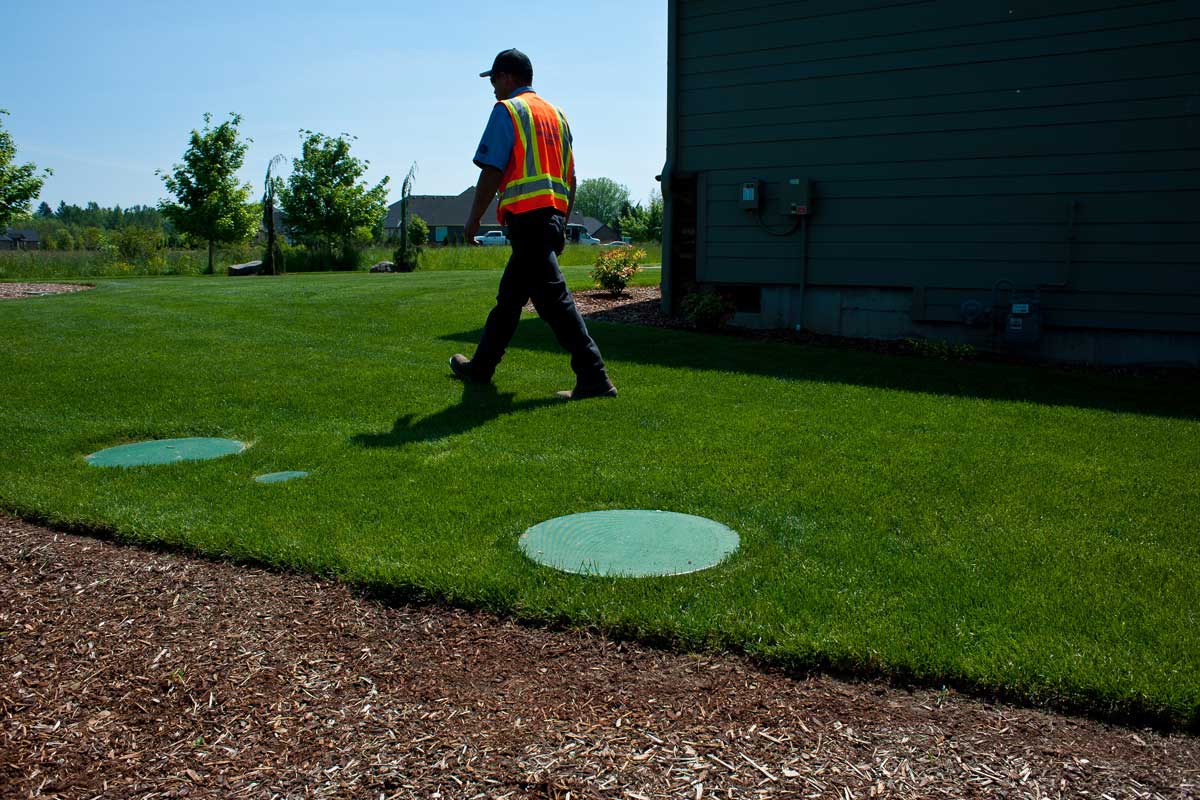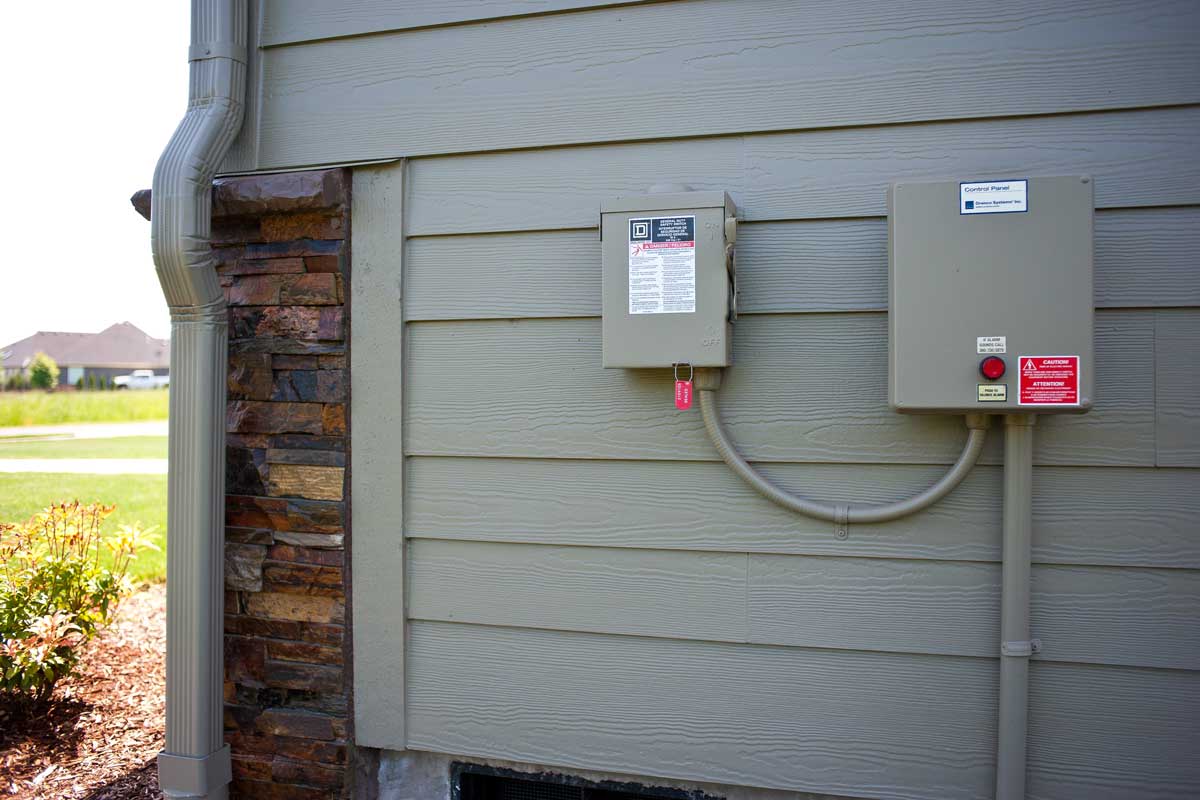STEP Systems
The District maintains and operates approximately 750 STEP (Septic Tank Effluent Pumping) systems in the Meadow Glade and Hockinson areas. STEP systems are based on single septic tank systems with electric pumps to pump the effluent to a community force main (low pressure sewer) system. A sewer easement dedicated to the District is required to allow for access onto the property’s containing a STEP system. Waste from the home or business is discharged by gravity into a tank, most typically a concrete vault. The vault allows for the solids to settle out and accumulate on the bottom. The liquid portion of the waste stream is then pumped out into the collection system. Periodically, the District will “pump out” the solids from the bottom of the tank. Contact us for assistance with your step system.
Grinder and STEP (Septic Tank Effluent Pumping) Systems are ” low-pressure sewer systems”. They consist of a small diameter pressurized pipe called a force main, a holding tank and a pump system that takes wastewater from the home, collects and stores the wastewater and then pumps it through the small force main into the larger collection system. The storage and pumping system is located on the homeowner’s property. A control panel will be located on the outside wall of your building near the tank.


STEP system control panel
One of the basic concerns for pressure systems is that the pumps will not work if there is a power outage. Using bath and kitchen facilities during these periods could result in a sewage backup onto your property. A properly installed system should have backwater prevention valves called check valves that will protect the house from a backup caused by the pressure system pushing water back towards your house. It will not protect the house from a full system where gravity is insufficient to drain the pipes in the house. Remember, if the home is without power for an extended period of time, the pump unit will not operate, and the collection tank will not be able to be emptied.
In the event of a power outage with the tank at a normal operating level (not in a high-level alarm status), the holding tank will have at least an additional 150 gallons of capacity available beyond the alarm stage. Based upon limited usage in a power outage situation, this will provide a two-person home with approximately two days of light wastewater use (no dishwasher, clothes washer or significant bath or shower use).
After an extended power outage, the holding tank may have wastewater past the alarm level, which will trigger the alarm to sound. You can silence the audible alarm and still have the alarm light on. Your system should pump down the tank over the next 15 to 20 minutes. If after 30 minutes your pump system does not engage and lower the volume in the tank (the alarm light is still on), you should call Lisa Standiford at the District at 360-993-8829 to explain your situation.
